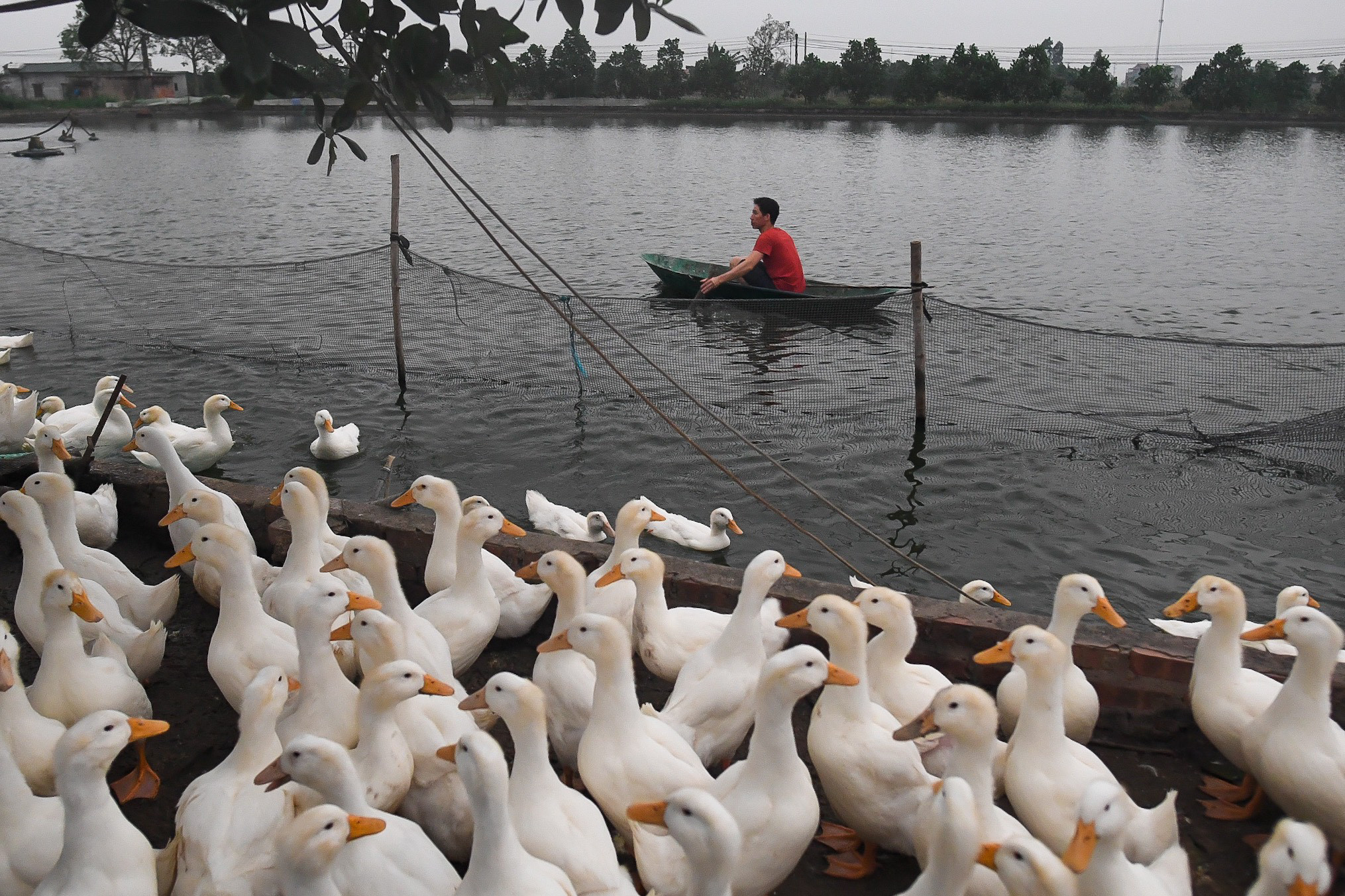
Tong Xuan Chinh, deputy head of the Department of Livestock Production under the Ministry of Agriculture and Rural Development (MARD), noted that Vietnam also has the second largest number of water-birds in the world.
In 2018-2022, poultry increased rapidly from 435 million heads to 557.3 million, most of which were used for meat, accounting for 81 percent of the country’s total poultry.
The poultry meat growth rate in the period reached 17.3 percent, while chicken alone was 18.52 percent.
According to Chinh, egg and meat output was very high. In 2022, the total output of eggs was 18 billion.
In the first quarter of 2023, the poultry number was estimated to have 551.4 million heads, up 2.4 percent, while poultry meat output was 563,200 tons, up 4.2 percent, and eggs 4.7 billion, up 4.5 percent compared with the same period last year.
The average poultry price has been stable since the beginning of the year at VND25,600 per kilogram, while egg price has hovered around 1,750-2,200.
Despite the high domestic output, Vietnam still spent big money to import livestock products, including live fowl for slaughter.
A report showed that the total livestock product value in 2022 reached $3.32 billion. Besides importing breeders, Vietnam also imported live fowl for domestic slaughtering, 6,603 tons, an increase of 100.8 percent, and slaughtered poultry meat 246,575 tons, up 9.6 percent over 2021.
In the first quarter of 2023, the live fowl imports alone totaled 1,120 tons and slaughtered 47,817 tons.
Meanwhile, domestic production capacity was very high, which was more than enough to satisfy the domestic market with 100 million people and 17 foreign travelers to Vietnam. MARD has tried to boost poultry products.
However, while the value of livestock exports decreased by 7.1 percent ($409 million tons) in 2022, Vietnam imported more than it exported by $2.92 billion, up 1.3 percent.
Nguyen Thanh Son, chair of the Vietnam Poultry Association (VIPA), said though the domestic supply is abundant, imports keep increasing, from 225,000 tons in 2021 to 246,000 tons in 2022 and 51,000 tons in the first three months of 2023.
“We are too lenient when allowing the import of poultry products to Vietnam. Chicken from Thailand and South Korea of different kinds have been imported, and chicken skin, necks, wings and legs as well. Meanwhile, the domestic market is unstable,” he said.
“The average life cycle of a fowl is 45-70 days but now farmers have to keep them for 100 days because they don't sell,” he said.
Big losses
Son pointed out that the profitability of poultry farming has been decreasing sharply.
Since 2022, farmers have been selling fowl at a loss of VND5,000-8,000 per kilogram. Not only farming households, but foreign invested enterprises (FIEs) have also incurred losses.
“While the total demand remains unchanged, total supply has increased sharply with supply from domestic sources and imports,” he said, adding that this is a wake-up alarm for poultry husbandry.
Currently, Vietnamese enterprises are inferior to foreign-invested enterprises. Farming households of small scale have been step by step weeded out of the ‘game’.
A report showed that in 2022, Vietnamese companies accounted for 10 percent of market share in white-feather fowl market segment, while FIEs were 90 percent.
As for colored fowl, FIEs held 55 percent, while domestic companies had 45 percent. The figures were 40 percent and 60 percent in 2021.
Chinh said farmers are taking a loss because animal feed prices have increased sharply, while the demand for poultry meat has dropped. Therefore, farmers have to sell products below production costs.
He went on to say that profit sharing in the poultry production chain is unreasonable.
Higher profits now go to the pockets of slaughterers and distributors, while farmers receive low profits, though they incur the highest risks.
Therefore, he called on the government to adjust some policies which are unreasonable, provide preferential credit, reduce corporate income tax for enterprises and simplify procedures to make it easier for farmers to access the government’s support packages.
Tam An